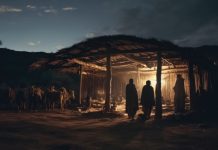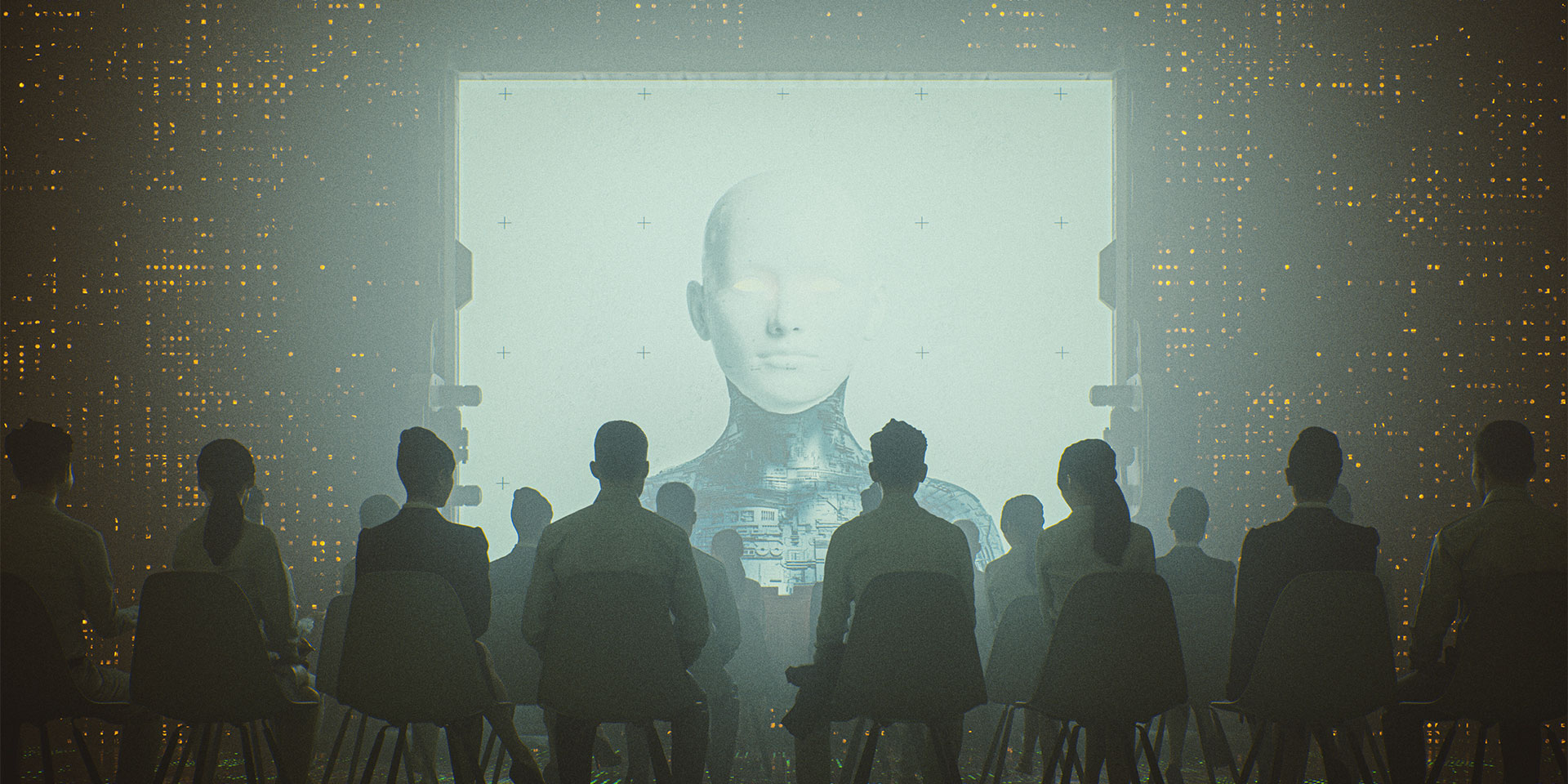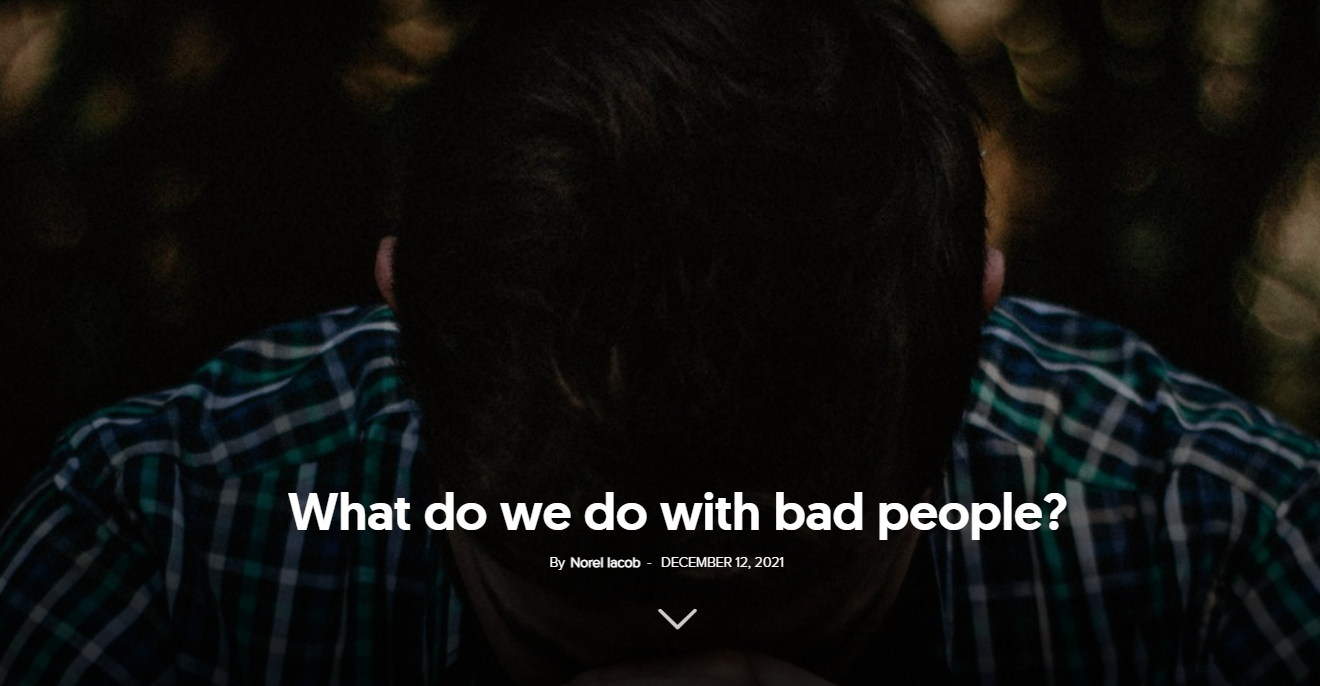“What is mankind that you make so much of them, that you give them so much attention, that you examine them every morning and test them every moment?” (Job 7:17-18)
“What is mankind?” is a philosophical question, as we are told in various philosophy textbooks. However, the life circumstances in which this question spontaneously comes to mind do not seem to have much to do with theoretical or intellectual frameworks, or with famous quotes, but with wonder, consternation, or even horror at something a fellow human does, at a given moment; something we wouldn’t have thought them capable of. Such a man was Willi Herold, who was born on September 11, 1925 and died on November 14, 1946, in Germany.
Mankind, between latency and manifestation
The 2017 movie The Captain (Der Hauptmann), a German, French, Polish, and Chinese co-production, artistically reproduces in black and white a real story from the end of the Second World War. The action takes place in Nazi Germany that was gradually falling apart under the onslaught of the Allied troops, resulting in Germany losing the war. The story has been reconstructed, including the essential dates and dialogues, using the documents remaining in the military and judicial archives. There is also a picture of the real Willi Herold, masterfully played by the young German actor Max Hubacher.
I mentioned this from the beginning because I am aware that many of us, when we learn from the press about the unimaginable atrocities committed by someone, want to see what that someone looks like—as if a person’s face might offer some distinguishing marks or foreboding or even premonitory signs of the horrors of which they were capable, although no one would suspect them of such things. When their picture is published, we are told something like: “Here is the monster with a human face!”; and yet all we can observe is a mere human face. We observe nothing out of the ordinary.
It is, however, precisely this sense of “ordinary” that produces the horror, the idea that just anyone—a person who resembles our next-door neighbour, a co-worker, a cousin, or even ourselves—was capable of such an atrocity. We would have expected them to have a piercing gaze like Rasputin’s or some deformity that has dragged and derailed them from humanisation, as in the pseudoscientific typologies of innate criminals sketched by 19th century criminologist Cesare Lombroso.
Following these reflections, we come to wonder how deep those criminal tendencies lay within—those hidden, latent drives—whether the respective person was aware of them or not, whether they had discernment or not, whether they wrestled with them or not, whether they regretted them or not… It is hard for us to accept that that person is our fellow man.
This situation illustrates a cognitive dissonance: we are forced to face some new, unpredictable data about something or someone and, by taking them into account, to modify our opinion about that something or someone, an opinion that until then had been comfortable, unproblematic, and certain.
But when cognitive dissonance affects us, in part because we share the same human nature with an abominable criminal, we begin to worry about what we ourselves would be capable of doing under similar circumstances. Could we see that monster in the mirror at some point?
Willi’s story
The movie contains very strong emotional images and, above all, an extraordinary soundtrack, which received an award for the best sound designer at the European Film Academy in 2018. We are made part of a life and death chase, in which we can hear the desperate breath of the prey, who tries to use their slim chance to escape alive, although the conditions are set by the chasers in the form of a trap: it is winter, a deserted field, a cold twilight, and a group of soldiers, under the command of an SS officer, offers an advantage of a few metres to a defecting German soldier, before shooting and burying him at the woodland edge.
The distance is meant to alleviate the psychological discomfort of executing a former comrade in arms. It was the winter of 1945, when many German soldiers were defecting and trying to go off the radar, sensing that Germany would lose the war and they would end up being judged by the Allies. Since they did not have the possibility to continue guarding and feeding defectors in the camps, those who remained loyal to Hitler, together with the other foreign detainees, organised such “hunts” as justified executions for defectors.
Miraculously, the chased defector, barefoot, cold, hungry, and dirty, whose blue eyes are the only thing shining from underneath the mud that covers him, escapes alive, hidden under the root of a tree in the forest. It is impossible not to empathise with him, precisely because of the feeling of solidarity one feels with any human, regardless of who they are, who is a victim of others, and is fighting for his life. That pitiful, frail, and desperate being did not die, thank God!
After this episode, we find the owner of the two blue eyes donning an SS officer’s uniform found in an army car abandoned in the wilderness. Immediately after the external change, the internal transformation begins: he imagines himself giving orders, instructing imaginary subordinates, condemning and executing others… and that’s exactly what he begins to do!
Taking advantage of the general chaos, in which papers and inspections were often ignored, he very convincingly plays the role of an officer tasked by the Führer himself to severely punish defectors. He forms a sort of operative team called “Herold” with a few ex-soldiers who also became abusers, rapists, and robbers of countrymen from around the province, and ends up executing hundreds of former comrades and other countrymen, civilians or military, without the slightest remorse or pity, but with excessive zealousness.
The exact crimes committed are not known, only the execution procedure is known: defectors detained in the camps—who would have had the right to a trial in which they would be tried by the Martial Court—were taken out at night and made to dig long trenches, then they were shot, pushed into the trenches, and covered—some even while still alive—with lime and dirt. After the terror and death, Willi and the crew would spread out, having wild parties thrown for them where their most absurd whims were indulged.
Even so, at any time, anyone—even one of the members of the horror brigade—could turn, from host or accomplice, into a victim of the discretionary dispositions of this 20-21-year-old young man, with a rather frail constitution, with a relaxed face, who does everything he does…just because he can!
Until the end of the war, no one stopped him. At one point, he is arrested and investigated by military prosecutors, and he almost convinces them that he took the initiative to purge the German army of traitors out of patriotism. He manages to escape before receiving the punishment and continues his criminal-predatory adventure through Germany.
It was enough to enter a locale, shout loudly that the mayor is a traitor, order the team to execute him on the spot, then to settle in the town hall and start the despotic actions, terrorising the locals. Only at the end of the war did the British sentence him to death for the crimes he committed. He was called “the Executioner of Emsland”.
The depths of self-knowledge
This life story provokes reflection on how well we can know ourselves. If someone had told Willi, during high school or at the beginning of the war, how he would evolve and end up, he certainly would not have believed it. If Germany had won the war, perhaps he would have been a decorated hero and returned to a normal, civilian life.
There are people who commit a crime when they are in an altered state of consciousness, and when they come to their senses and realise what they’ve done, it all seems like a bad dream they would like to wake up from, and often regret the deed. However, when a person commits genocide for almost two years and does not “wake up”, although they are not mad, nor do they regret or care about the suffering they caused (and prior to this they would not have believed themselves capable of such acts), the question arises: what is the source of such a great and unpredictable latent evil that lies within an ordinary individual?
Willi Herold could have had any other name, he was nothing out of the ordinary, he was not suffering from mental illness, and he had no defects or special qualities. Hitler, Stalin, and Charles Manson were considered criminals with distinctive features. Their personal history, socio-political situation, significant details from childhood and adolescence, birth charts and premonitions that announced their destiny were investigated.
But, judging by all of this, a Willi Herold is more dangerous than them, because he can come out of nowhere, unexpectedly, when two conditions are met: when an individual gains or takes great power over their fellows, and when they know or believe they will never be held accountable for their actions and decisions.
When the freedom of action is maximum, and the responsibility, minimum, the diabolical in them, which was lying latent, becomes manifest, as if a sleeping dragon wakes up, under the right conditions. Of course, not everyone hides such a “hydra” inside, but the fact that an ordinary human can hide it should worry us and make us realise how little we know about the human mind and soul.
The apostle John stated that “the whole world lies under the sway of the wicked one” (1 John 5:19 NKJV), and the prophet Jeremiah warned that our heart is “deceitful above all things”, “beyond cure”, and that we ourselves cannot understand it (Jeremiah 17:9). These reflections seem far too pessimistic and insulting to the dignity of man as a rational being, but such surprising cases show us how little rational and how potentially evil we really are.
In a book dedicated to great contemporary French thinkers, I read about the paradoxical destiny of a philosopher who, in his work, praised human reason and credited it as the only beacon of light in life. However, when he got old, he fell prey to some irrational suspicions regarding his wife and ended up killing her.[1]
In my opinion, the biblical warnings show something else: that, in the absence of God as the court of human reason and conscience, it is possible that the latency in us is a dark one, although unknown to us, and that it is possible that only the absence of the two favourable conditions to evil would prevent it from emerging: maximum freedom of action and minimum responsibility for it.
I consider the famous book The Lucifer Effect to be a proof in this sense, the result of the 1971 experiment undertaken by an American social psychology professor from Stanford University on a group of students. He assigned them the roles of prisoners or guards, setting up a make-believe prison, in order to study their behaviour. The negative reactions that he revealed in the latent behaviour of the “guardians” astounds to this day and raises the same unsettling question: how do good, ordinary people become perpetrators of evil?
It is worth reflecting on what we are told about the transformation of good people into evildoers: “We will meet a host of people who have done very bad things to others, often out of a sense of high purpose, the best ideology, and moral imperative. You are alerted to watch for demons along the path, but you may be disappointed by their banality and their similarity to your next-door neighbour (…) I will invite you to walk in their shoes and see through their eyes in order to give you an insider’s perspective upon evil, up close and personal”.[2]
Corina Matei is a PhD lecturer at the Faculty of Communication Sciences and International Relations of the “Titu Maiorescu” University, Bucharest.




















